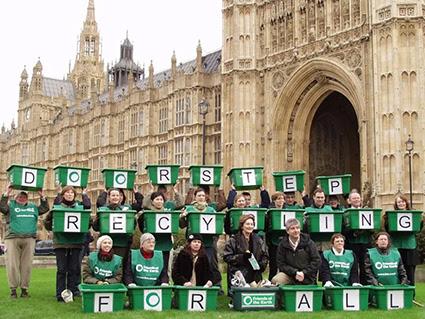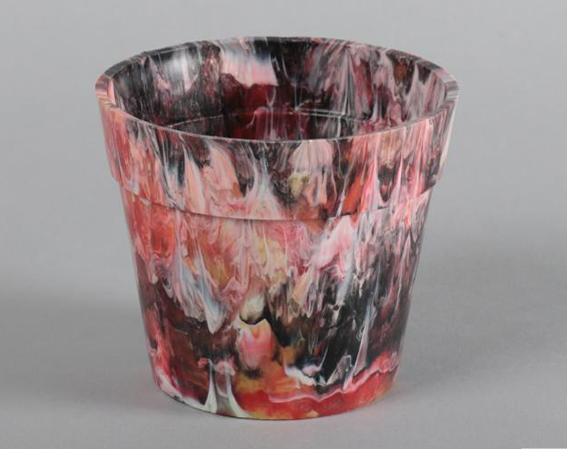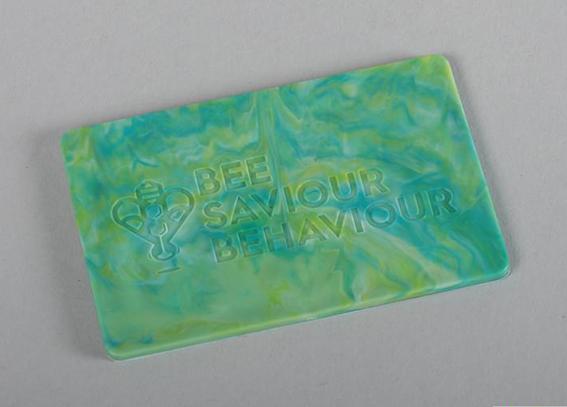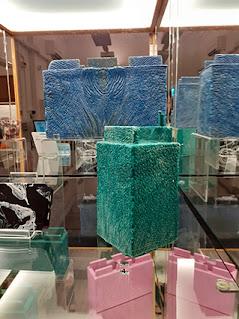The collection of
household plastics for recycling through the UK’s Local Authority bin
collection service began exactly twenty years ago with the introduction of the 2003
Household Waste Recycling Act. Looking back, it now seems crazy that up until
that point, we had all been throwing our plastics packaging into normal waste
every week, destined for incineration or landfill!

Since then, the variety of materials being accepted for recycling has continued to grow, as have the volumes being collected, but recent figures suggest that less than half of the plastics we discard are actually being recycled. To counter this, an increasing number of small businesses have found ways to capitalise on the collection of this waste from within their communities to create new products. These alternative, local, targeted recycling initiatives help to lower the waste’s overall carbon footprint and often utilise other plastics materials not currently being collected by councils.
Some examples from within MoDiP’s collection include:
The Relic plant pot, injection moulded in recycled polypropylene sourced from bottle tops, hangers and broken Tupperware. The swirls and layers within each pot are unique.
 AIBDC : 008622
AIBDC : 008622
Image credit: MoDiP
The Bee Saviour Behaviour card, injection moulded in recycled polypropylene recovered from used DVD cases, collected by the maker from local charity shops.
 AIBDC : 009495
AIBDC : 009495
Image credit: MoDiP
Slot-together style building bricks, made of recycled polypropylene (the pink and black examples) and high-density polyethylene (the green and blue examples). The bricks are being designed so that they can be produced in high volumes by small-scale factories with the intention of addressing problems of plastics waste in developing countries and a lack of suitable, affordable housing in those communities.
 AIBDC
: 008794 and 008795
AIBDC
: 008794 and 008795
Image credit: Katherine Pell
The Gomi portable charger, made from compression moulded low-density polyethylene flexible plastic waste such as plastic bags and bubble wrap. Currently non-recyclable these are sourced from wholesalers, businesses and households in Brighton.
 AIBDC
: 008531
AIBDC
: 008531
Image credit: Katherine Pell
All of these lovely objects can be viewed in the museum and will be on display until
8th September 2023.
Katherine Pell
Collections Officer
Image

Friends of the
Earth had been campaigning since 2000 for every
household in the UK to have a
doorstop recycling service.
Image credit: https://friendsoftheearth.uk/about/recycling-bill-success-how-we-got-uk-recycling
Since then, the variety of materials being accepted for recycling has continued to grow, as have the volumes being collected, but recent figures suggest that less than half of the plastics we discard are actually being recycled. To counter this, an increasing number of small businesses have found ways to capitalise on the collection of this waste from within their communities to create new products. These alternative, local, targeted recycling initiatives help to lower the waste’s overall carbon footprint and often utilise other plastics materials not currently being collected by councils.
Some examples from within MoDiP’s collection include:
The Relic plant pot, injection moulded in recycled polypropylene sourced from bottle tops, hangers and broken Tupperware. The swirls and layers within each pot are unique.
Image

Image credit: MoDiP
The Bee Saviour Behaviour card, injection moulded in recycled polypropylene recovered from used DVD cases, collected by the maker from local charity shops.
Image

Image credit: MoDiP
Slot-together style building bricks, made of recycled polypropylene (the pink and black examples) and high-density polyethylene (the green and blue examples). The bricks are being designed so that they can be produced in high volumes by small-scale factories with the intention of addressing problems of plastics waste in developing countries and a lack of suitable, affordable housing in those communities.
Image

Image credit: Katherine Pell
The Gomi portable charger, made from compression moulded low-density polyethylene flexible plastic waste such as plastic bags and bubble wrap. Currently non-recyclable these are sourced from wholesalers, businesses and households in Brighton.
Image

Image credit: Katherine Pell
All of these lovely objects can be viewed in the museum and will be on display until
8th September 2023.
Katherine Pell
Collections Officer
